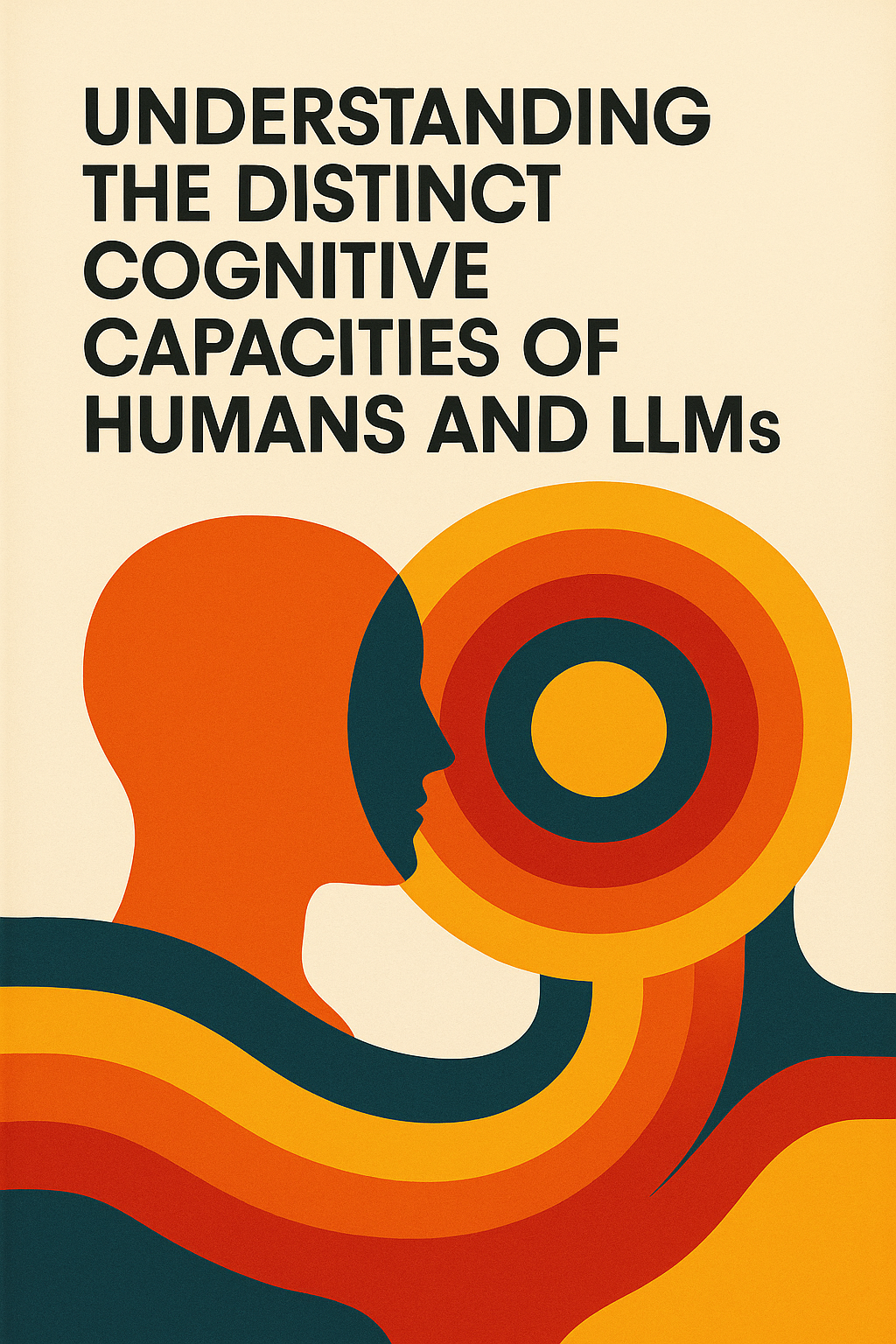Understanding the Distinct Cognitive Capacities of Humans and LLMs

By J. Owen Matson, Ph.D.
Human and AI: Cognitive Differences that Make a Difference
If we accept N. Katherine Hayles’ framework for cognition, we begin with a definition with the length of a tweet and the scope of a creation myth: “Cognition is a process that interprets information in contexts connected to meaning.” Under this capacious roof we find a bacterium sidling up a chemical gradient, a human hammering out a sonnet in fit of romantic inspiration, a fungal network passing gossip through its filaments, and an LLM churning out text with tireless non-enthusiasm. Where traditions of cognitivism abstracted human thought into sterile, floating arithmetic, Hayles’ account offers a more ecumenical architecture, one that invites wildly different cognitive agents to mingle in the same conceptual neighborhood while retaining their strange and unruly particularities.
Human cognition arises through the dense interplay of bodies, cultures, and histories. The body generates awareness through sensation, movement, and affect, so even the most abstract concepts retain traces of breath and pulse. Memory accumulates through these embodied processes, creating a temporal depth in which past, present, and future intertwine. Humans inhabit time, experiencing its weight in rituals, gestures, and collective narratives. Within this temporal field, judgment acquires consequence, shaped by care, empathy, and accountability. Ethics emerges through lived relationships rather than mechanical procedure. Humans can reflect on their own interpretations, revising assumptions midstream. They can dwell within ambiguity, allowing contradiction to generate insight. Human creativity moves with intention and desire, producing forms and ideas that reach beyond the simple recombination of what already exists.
LLMs enact cognition through architectures without metabolism or mortality. Its processes are distributed across servers and infrastructures rather than localized in a single body. The traverse massive cultural archives—billions of texts and images—at a reach and speed unimaginable to human collectives. And LLMs can detect patterns and relationships across datasets too vast for human perception, and generate outputs continuously, without fatigue, in novel combinations.
When these forms of cognition intersect, they produce a shared field of unpredictable exchange in complex assemblages as radically different agents in an expanding ecology of meaning, each reshaping the conditions of the other through their ongoing interactions.
Summary of Cognitive Differences
Humans
- Embodied Consciousness
- Ethical Judgment
- Historical Consciousness
- Reflexive Self-Awareness
- Embodied Meaning-Making
- Intentional Creativity
LLMs
- Access to Massive Corpus
- High-Speed Processing
- Mass Pattern Detection
- Endless, Unfatigued Production
- Combinatorial Novelty